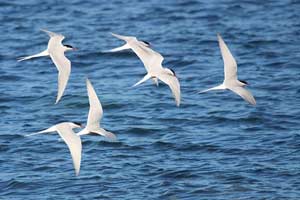Every autumn, flocks of cranes line up and fly south. By the following spring, they return to their original location along the same route they took. These journeys are known as seasonal migrations. This behavior is prominent in migratory birds like cranes and swallows. The timing and routes of migration rarely change, with certain species of swallows returning to the exact “home” they left, continuing this cycle from generation to generation in their “ancestral home.”
 |
|
Migratory Birds (Photo: arthurgrosset) |
In addition to birds, insects also exhibit similar migratory habits. In the Americas, the beautiful Monarch butterfly migrates in large groups from North America to South America, covering distances of over 3000 kilometers. They hibernate in the forests of Mexico, Cuba, the Bahamas, and southern California. By the following spring, they return north, during which they reproduce and eventually die along the way. The next generation then migrates south, continuing this cycle.
Why do migratory birds and insects have such seasonal habits? How do they navigate? It’s puzzling; for short distances, navigation can rely on sight, but for long migrations, visual cues become inadequate.
It is hypothesized that birds may use the position of the sun as a compass. If this is the case, they must be able to adjust for the sun’s movement throughout the day. Scientists believe that birds possess a biological mechanism similar to a clock that accurately tracks the sun’s position. But what do they do at night without the sun? It is speculated that they navigate using the stars. However, on moonless, starless nights, they still manage to fly in the right direction. So what is the secret? Could they be using magnetic fields, polarized light, atmospheric pressure, or even scent?
As for butterflies, it is believed that their migratory patterns may be linked to genetics. Research on seasonal migratory butterflies is still in its early stages, and many fascinating discoveries are sure to come.

















































